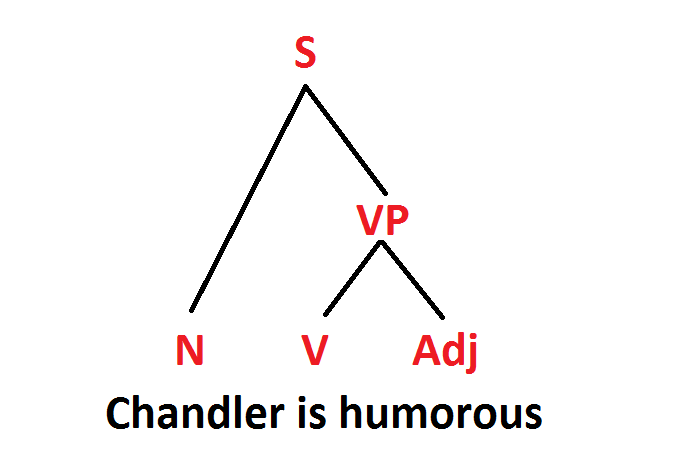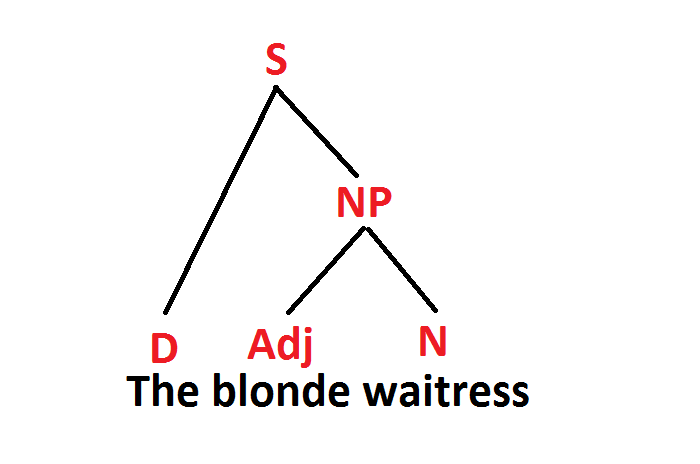SoSe15: Term paper project: Predicative and Attributive Adjectives: Difference between revisions
(→Task 2) |
|||
| (30 intermediate revisions by one other user not shown) | |||
| Line 7: | Line 7: | ||
= Short description of the project = | = Short description of the project = | ||
* Difference between attributive and predicative adjectives | |||
* Video (lexical entries of both types of adjectives) | |||
* Tasks | |||
= Produced material = | = Produced material = | ||
== Difference between predicative and attributive adjectives == | |||
* attributive adjectives are used right before the noun they qualify | |||
* predicative adjectives come after ''to be'' or similar verbs such as ''become'' and ''seem'' | |||
* most adjectives can be both attributive and predicative (e.g. the ''blue'' sky - the sky is ''blue'') | |||
* some adjectives work only one way (e.g. He is a ''mere'' boy - *The boy is ''mere'' (attributive-only adjective) '''or''' The baby is ''asleep'' - *The ''asleep'' Baby (predicative-only adjective)) | |||
==The Model based on "Friends"== | |||
For our world, we use the characters of the American television sitcom "Friends", which aired on American television from 1994 to 2004. The sitcom deals with six friends living in New York City. | |||
'''Individuals:''' | |||
* Chandler (executive in statistical analysis and data reconfiguration and the husband of Monica) | |||
* Rachel (waitress, who has an on-again/off-again relationship with Ross) | |||
* Ross (paleontologist, who is the brother of Monica and in an on-again/off-again relationship with Rachel) | |||
* Monica (chef, who is the sister of Ross and the wife of Chandler) | |||
* Joey (actor, who lives together with Chandler) | |||
* Phoebe (masseuse and self-taught musician) | |||
<!-- | |||
[[File:File.jpg]] | |||
--> | |||
== Video == | |||
After having watched the video, work on the following tasks | |||
== Task 1== | == Task 1== | ||
| Line 49: | Line 85: | ||
<div class="mw-collapsible-content"> | <div class="mw-collapsible-content"> | ||
# | # Syntactic structure: [[File:tree_1.png|options|caption]] | ||
# | # Logical form: humorous <sub>1</sub> (chandler) | ||
# | # Lexical entry: | ||
{| | {| | ||
| | | | ||
| Line 75: | Line 111: | ||
|- | |- | ||
|INCONT | |INCONT | ||
| | | [b] | ||
|- | |- | ||
|PARTS | |PARTS | ||
| <'''humorous'''<sub>1</sub>, '''humorous'''<sub>1</sub>([a], [ | | <[a]'''humorous'''<sub>1</sub>, [b]'''humorous'''<sub>1</sub>([a], [c]) > | ||
|- | |- | ||
|} | |} | ||
| Line 86: | Line 122: | ||
b. The blonde waitress . | b. The blonde waitress . | ||
<div class="toccolours mw-collapsible mw-collapsed" style="width:800px"> | <div class="toccolours mw-collapsible mw-collapsed" style="width:800px"> | ||
Check your answer | '''Check your answer''' | ||
<div class="mw-collapsible-content"> | <div class="mw-collapsible-content"> | ||
# Syntactic structure | # Syntactic structure: [[File:tree_2.png|options|caption]] | ||
# Logical form: | # Logical form: waitress <sub>1</sub> (blonde) | ||
# Lexical entry | # Lexical entry: | ||
{| | |||
| | |||
|''blonde'' | |||
|- | |||
|PHON | |||
| < ''blonde'' > | |||
|- | |||
|HEAD | |||
| ''adjective'' | |||
|- | |||
|PRED | |||
| <''minus''> | |||
|- | |||
|ARG-ST | |||
| <NP[DR [c]] > | |||
|- | |||
|MOD | |||
| < > | |||
|- | |||
|DR | |||
| [a] | |||
|- | |||
|INCONT | |||
| [b] | |||
|- | |||
|PARTS | |||
| <[a]'''blonde'''<sub>1</sub>, [b]'''blonde'''<sub>1</sub>([a], [c]), ϕ∧ɣ> | |||
|- | |||
|} | |||
</div></div> | </div></div> | ||
Latest revision as of 08:43, 5 October 2015
Warning:
The material on this page has been created as part of a seminar. It is still heavily under construction and we do not guarantee its correctness. If you have comments on this page or suggestions for improvement, please contact Manfred Sailer.
This note will be removed once the page has been carefully checked and integrated into the main part of this wiki.
Participants
- Ekram Aghdoube
- Hana Hashi
Short description of the project
- Difference between attributive and predicative adjectives
- Video (lexical entries of both types of adjectives)
- Tasks
Produced material
Difference between predicative and attributive adjectives
- attributive adjectives are used right before the noun they qualify
- predicative adjectives come after to be or similar verbs such as become and seem
- most adjectives can be both attributive and predicative (e.g. the blue sky - the sky is blue)
- some adjectives work only one way (e.g. He is a mere boy - *The boy is mere (attributive-only adjective) or The baby is asleep - *The asleep Baby (predicative-only adjective))
The Model based on "Friends"
For our world, we use the characters of the American television sitcom "Friends", which aired on American television from 1994 to 2004. The sitcom deals with six friends living in New York City.
Individuals:
- Chandler (executive in statistical analysis and data reconfiguration and the husband of Monica)
- Rachel (waitress, who has an on-again/off-again relationship with Ross)
- Ross (paleontologist, who is the brother of Monica and in an on-again/off-again relationship with Rachel)
- Monica (chef, who is the sister of Ross and the wife of Chandler)
- Joey (actor, who lives together with Chandler)
- Phoebe (masseuse and self-taught musician)
Video
After having watched the video, work on the following tasks
Task 1
Look at the following sentences and decide, whether the adjectives are used attributively or predicatively.
Task 2
Consider the following sentences.
- For each of these, provide the syntactic structure.
- Write down the logical forms.
- Provide a full analysis of the sentences, indicating following values: PHON, HEAD, PRED PLUS, ARG-ST, MOD, DR, INCONT, PARTS.
a. Chandler is humorous.
Check your answer
b. The blonde waitress .
Check your answer
Back to the Semantics 2 page.

